FM Conway’s business ethos is ‘Great People, Great Work’ and its commitment to maintaining the health, safety and welfare of its employees and the communities it works in flows through its fleet operations.
This is particularly evident in the infrastructure services company’s approach to road safety and decarbonisation: areas which have both seen significant progress in recent years.
“We made a statement of intent that, through our actions and innovations, no road user will suffer life-changing harm involving our vehicles by 2030,” says Dave Boorman, fleet telematic manager at FM Conway.
“Everything we’ve done over the past five years is leading towards making the streets of London and everywhere else we work in safer for pedestrians and members of the public.”
This approach is reflected in the improved safety statistics of its 1,000-plus vehicle fleet.
After introducing an occupational road risk programme, which made Samsara’s Vehicle Gateways and dual-facing AI dashcams central to its risk management programme, the company has seen:
FM Conway’s risk management programme is designed to target risk at the source and identify improvements to safety critical controls across its fleet and training processes.
FM Conway’s business ethos is ‘Great People, Great Work’ and its commitment to maintaining the health, safety and welfare of its employees and the communities it works in flows through its fleet operations.
This is particularly evident in the infrastructure services company’s approach to road safety and decarbonisation: areas which have both seen significant progress in recent years.
“We made a statement of intent that, through our actions and innovations, no road user will suffer life-changing harm involving our vehicles by 2030,” says Dave Boorman, fleet telematic manager at FM Conway.
“Everything we’ve done over the past five years is leading towards making the streets of London and everywhere else we work in safer for pedestrians and members of the public.”
This approach is reflected in the improved safety statistics of its 1,000-plus vehicle fleet.
After introducing an occupational road risk programme, which made Samsara’s Vehicle Gateways and dual-facing AI dashcams central to its risk management programme, the company has seen:
- Road traffic collisions fall 21.9% in just 12 months
- Light speeding events fall from 2.7% to 0.6%, with moderate speeding down to an average of just 0.2% within a year
- Outstanding vehicle defects reduced by 56%
- Cost savings of £212,000, including £155,000 on third-party insurance claims.
Risk management
FM Conway’s risk management programme is designed to target risk at the source and identify improvements to safety critical controls across its fleet and training processes.
The importance the company places on safety is drummed into all employees from the moment they join the business.
“When they start, they’re given copies of the company policies,” says Boorman. “Whenever we have anyone joining we know what kind of vehicle they are going to be required to drive, so we put them through the appropriate driving assessment.”
If they are using a vehicle covered by a standard licence, then they will have their driving assessed by one of FM Conway’s six in-house driver assessors.
This comprises a half-day training session and includes on-the-road, e-learning and classroom work.
HGV drivers will be partnered with an existing driver and will spend a couple of weeks with them to make sure they are aware of the challenges they may face.
“They may be working within Central London, for example, which is very different from driving outside the capital as there are so many vulnerable road users,” says Boorman.
Driving is then monitored through Samsara’s Connected Operations platform, with behaviours such as harsh braking, acceleration, speeding and using a mobile phone while driving monitored.
Through alerts, FM Conway can identify any risky or poor driver behaviour in real-time and monitor trends in incidents.
“We used the implementation of the Samsara technology as an educational piece for FM Conway as well to see if we were doing all we can to safeguard our drivers and, in turn, members of the public,” says Boorman.
“For example, we’re in an industry where everything which is sent to a driver somehow ends up on a mobile device.
“We had to ask ourself if we were providing our drivers with everything they need so they don’t need to break the law, so they don’t need to be on a mobile device, so they can fully concentrate on the road ahead.
“We made sure all our vehicles were equipped with a mobile device holder so they don’t physically have to hold it if they are using it for sat-nav or something.
“We also try to make sure all vehicles have connectivity to a mobile device so they never need to touch it to make or receive a phone call.”
If the system alerts FM Conway to any potentially dangerous behaviours, it can then investigate the incidents and take remedial action if necessary. It is able to put employees through its driver assessment training quickly, given that all its trainers and assessors are in-house.
It also carries out root cause analysis to identify any issues to ensure it can take action quickly. This covers the immediate cause describing the event as it happened, human failure analysis (errors and violations – routine, situational, exceptional), human belief analysis (the driver’s interpretation of what happened), and a review of organisational failure areas (could the company have done more?).
Telematics data gives insights into driver behaviour, while outward- and inward-facing cameras provide real-time information on incidents and driver behaviour, such as harsh braking or erratic driving.
Using AI within the technology, FM Conway can also pick up issues such as distracted driving, the driver not wearing a seatbelt, smoking, mobile phone usage and drowsiness.
“We use this data alongside vehicle and driver documentation to gain a comprehensive picture of driver behaviour, the condition of the vehicle, driver competency and fitness to drive,” says Boorman.
“The inward-facing cameras have been very effective. If you have an issue with harsh braking for example, you won’t know what has caused it.
“It may be obvious from an outward-facing camera that a vehicle in front has braked hard, but you still won’t know fully whether the driver was concentrating and therefore didn’t realise the vehicle in front had stopped.
“If you’ve got the dual-facing camera, you can look at the driver and you might see that he’s looking down at his phone, or he’s picking up something to eat or drink and hasn’t seen the vehicle in front stop.”
Drivers also have access to the Samsara Driver App to keep track of their safety score and access training resources on an ongoing basis.
To measure the impact of its risk management programme, FM Conway is looking for a reduction of safety alerts, speeding infringements, repeat offenders, plus reported incidents regardless of whether it leads to a claim being made
Investment pays off
The investment in FM Conway’s risk management technology has paid off – financially, as well as from a safety perspective.
“I run a PNL on Samsara purely for my benefit, and then if anybody from the board asks me what the return on investment is I can show them,” says Boorman. “But I have to go no further than the reduction in our insurance premiums.
“There are also reduced claims because we now have the evidence to allow us to defend them, whereas before we would not have been able to prove it wasn’t our fault, so we ended up paying them.”
FM Conway has saved £155,000 on third-party insurance claims, while it has also saved tens of thousands of pounds through Samsara’s Vehicle Gateways, which monitors diagnostic information about the vehicles, such as potential engine faults and fuel economy.
Net Zero strategy
Under its Net Zero Strategy, the company committed to 55% of its commercial vehicles under 1.5 tonnes being electric by the end of 2024, all its company cars being zero emission by the end of 2025, and vehicles replaced with cargo bikes/standard bikes where practical.
By 2030, all vans under 1.5t will also be electric, all vehicles under five tonnes will be zero emission, and half of the vehicles over five tonnes will be replaced with zero or low emission alternatives if viable technological advancement allows.
Consideration is being given to replacing some of the 1.5t vans with electric cars as they may be better suited to their operational duties, with others replaced by cargo bikes.
“A lot of the time the supervisors who were using the 1.5t panel vans don’t use them for carrying anything, they purely use them to get to sites.” says Boorman.
“A lot of the supervisors, when they’re working in somewhere like Westminster, Kensington, or Fulham, choose to walk between sites anyway because it’s quicker than driving.
“And then you’ve got supervisors who might want to take something like a measuring wheel or some cones, and you can take those things on a bike.
“It makes sense as they get between sites quicker and carry something at the same time.”
FM Conway has also extended its use of HVO (hydrotreated vegetable oil) in its local and strategic highways operations, shifting away from diesel.
The company projects the move will have saved around 3,000 tonnes of CO2 emissions through to the end of this month – equivalent to taking 60 diesel HGVs off the road for one year.
FM Conway will then assess the feasibility of making a permanent switch to HVO.
“We are already tackling embodied carbon through our pioneering material circularity approach, and this switch to HVO represents another step toward making the CO2 savings and improving the air quality across all phases of the works we deliver,” says Matt Tallon, sustainability director at FM Conway
“It supports our ethos of leading positive change in the infrastructure industry through experimentation and innovation.”
The drive to reduce carbon emissions extends beyond its vehicles and into its plant machinery as well.
One initiative, launched in February, saw the company work with Transport for London (TfL) on a six-week trial of zero-emission construction vehicles, which includes a UK first using mobile recharging.
The organisations have partnered with Volvo Construction Equipment and SMT to deliver the trail, with an electric excavator and wheel loader replacing equipment traditionally powered by fossil fuels.
“This bespoke charging solution removes many of the barriers we have faced in the use of electric plant machinery, and we’ve seen that it represents a viable option for similar sites in future.”
Login to continue reading.
This article is premium content. To view, please register for free or sign in to read it.



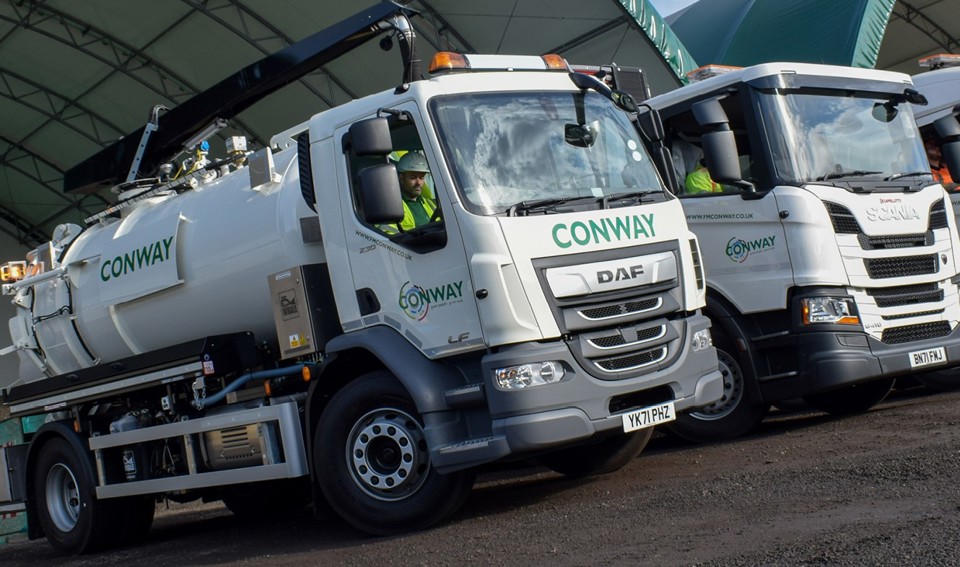













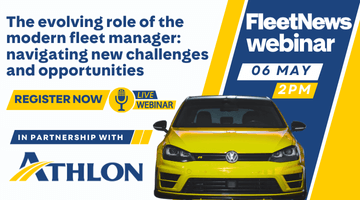
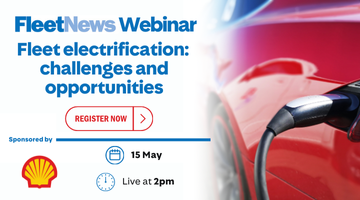
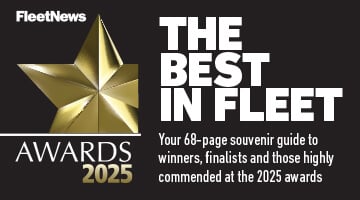
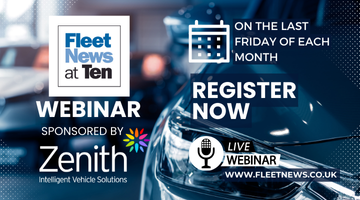
Login to comment
Comments
No comments have been made yet.